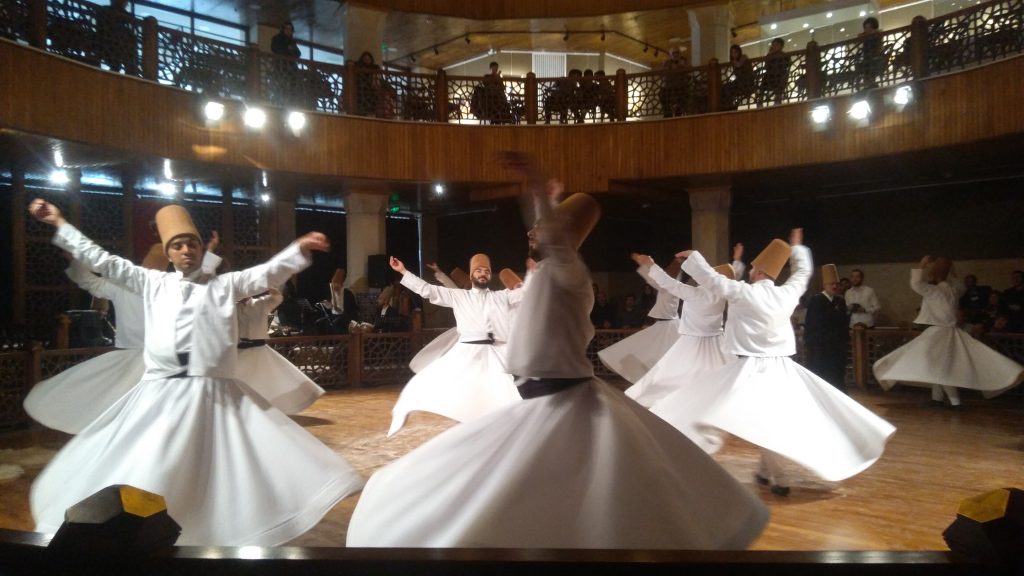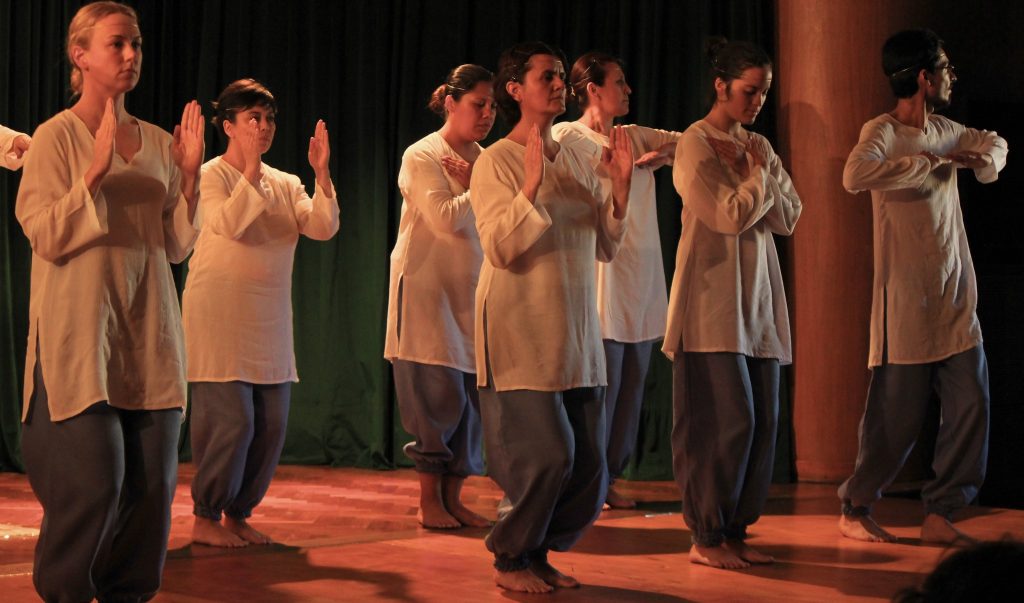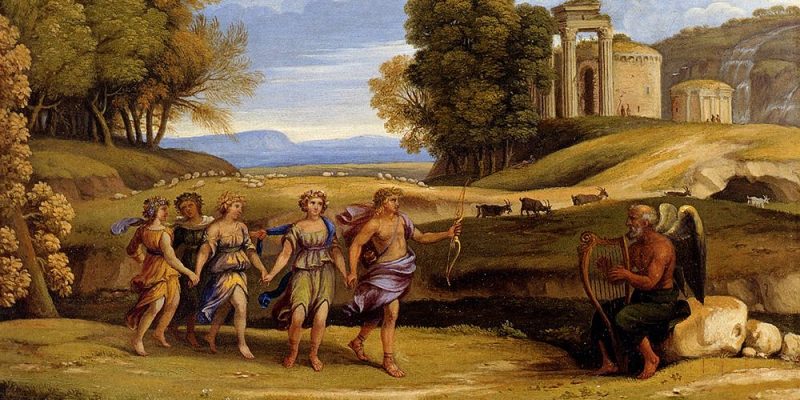Sacred Dances: The Acting of Movement upon Spirit and Consciousness
Sacred dances are some of the earliest dances in the known human history. For many thousands of years, humans have included movements and rhythmic movements during their religious ceremonies and observances. We can trace this custom in many ancient cultures of the world, such as in North and South America, Egypt, Greece, Babylon, Persia, India, Tibet, in Slavic and Nordic cultures, among the Aboriginal tribes of Pacific islands, and in many other cultures throughout the world. Most religions of today have (or have had) sacred dances as a very important part of their ceremonies and gatherings.
Movements and dances were used for various purposes during such religious gatherings; for example, they were used as part of a ritualistic approach to ask a deity for what the tribe needed at that time, such as good harvest, rain, sun, fertility, marriage ceremonies, abundance, blessings, and many other things. Many of those ancient tribes used dances as part of their vision quest or for some other spiritual needs. More sophisticated cultures developed a particular form of dances through which they communicated universal truths to the audience.
In one of his lecture, Samael Aun Weor has said the following about sacred dances:
“The sacred dances were true informative books that deliberately transmitted certain transcendental cosmic knowledge.
Whirling dervishes do not ignore the seven mutually balanced temptations of living organisms.
The ancient dancers knew the seven independent parts of the body, and they knew very well what the seven different lines of movement are. The sacred dancers knew very well that each of the seven lines of movement has seven points of dynamic concentration.
The dancers of Babylon and Greece and Egypt were not unaware that all this crystallized in the dancing atom and in the gigantic planet that dances around its center of cosmic gravitation.
If we could invent a perfect machine that would mimic exactly all the movements of the seven planets of our solar system around the sun, we would discover to our astonishment the secret of the Whirling Dervishes. Actually the dancing dervishes perfectly imitate all the movements of the planets around the sun.
The sacred dances of the times of Egypt, Babylon, Greece, etc., go even further and transmitted tremendous cosmic, anthropo-genetic, psycho-biological, mathematical, etc., etc., etc. truths. When the first symptoms of atheism, skepticism and materialism began to appear in Babylon, the degeneration of the five senses accelerated frighteningly. It is perfectly demonstrated that we are what we think and that if we think as materialists, we degenerate and fossilize.
[…]Saturdays, the day of the theater, the day of the mysteries, were very popular in ancient times. Then wonderful cosmic dramas were presented, the drama served to transmit to the initiates valuable knowledge.”
He has also said that “the Sacred Dances of ancient times constituted a precious teaching for the emotional bran: Each movement was similar to a Sacred Letter (it was, therefore, a letter), and a set of movements formed a word, and a set of words a phrase.”
I have seen performances of sacred dances, and have found the dynamics of it very interesting. From what Samael said and from what I experienced, it is clear that the performers of such a dance can transmit a message through their movements, as in that time the emotional center is more active due to music and the situation in general. Even if there is no music, a simple act of conscious movements aligned with one’s own higher nature can put the emotional center of both the performer and the spectator into activity. The effect produced in the emotional center will depend on the message that is being transmitted with the dance: a noble or spiritual intent would act more upon the higher emotional center, whereas purely materialistic performance would provoke corresponding ego states. Sacred dances of the ancient times were often performed in an uplifting environment, a temple or a sacred site in nature where gods were invoked, and spiritual teachings were aimed to be given to the audience.
It is said that besides the transmitting of universal truths, the sacred dances also had other functions, such as developing concentration, will, patience, bodily fitness, achieving higher states of consciousness. It was also a mean to arrive to self-knowledge, to produce a conscious shocks through movements and thus increase the ability of self-awareness, accessing and transmitting certain energetic forces etc.

The whirling dervishes, a dance from the Sufi tradition.
In more recent time, it was George Ivanovich Gurdjieff who developed his own movements based on what he saw and learned on his travels in Asia. Gurdjieff was a prominent spiritual figure of the first half of the 20th century due to his contribution to esoteric knowledge, and his dances formed an important part of his teachings. He said the following about these sacred dances in a book In Search of the Miraculous:
“Imagine that in the study of the movements of the heavenly bodies, let us say the planets of the solar system, a special mechanism is constructed to give a visual representation of the laws of these movements and to remind us of them. In this mechanism each planet, which is represented by a sphere of appropriate size, is placed at a certain distance from a central sphere representing the sun. The mechanism is set in motion and all the spheres begin to rotate and to move along prescribed paths, reproducing in a visual form the laws which govern the movements of the planets. This mechanism reminds you of all you know about the solar system. There is something like this in the rhythm of certain dances. In the strictly defined movements and combinations of the dancers, certain laws are visually reproduced which arc intelligible to those who know them. Such dances are called ‘sacred dances.’ In the course of my travels in the East I have many times witnessed such dances being performed during sacred services in various ancient temples.”
“Everyone in the monastery knows the alphabet of these postures and when, in the evening in the main hall of the temple, the priestesses perform the dances indicated for the ritual of that day, the brethren may read in these dances one or another truth which men have placed there thousands of years before. These dances correspond precisely to our books. Just as is now done on paper, so, once, certain information about long past events was recorded in dances and transmitted from century to century to people of subsequent generations.”
It is incredible how the complexity of the shape of the physical body allows for the latter to serve as a medium for such an important knowledge to be passed down to generations, the knowledge of the laws and the mechanics of the universe, the history of civilizations etc. In these times, probably not many people would be able to receive and understand the teachings given in such a way; it would be very dependent on the level of intuition and consciousness, whereas in the past, when people were not preoccupied with all the things that we are today and were more in tune with the spiritual side of life, it was probably the case that their emotional center was more developed, enabling them to feel more than we do today.

A group performing the Gurdjieff dances.
Gurdjieff have also said that our daily movements affect our psychological state. He says that “if a man assumes a posture that corresponds, in him, to a feeling of grief or dejection, then within a short time he will actually feel grief or dejection”, and that “fear, indifference, aversion and so on may be created by artificial changes of postures”. From this it is clear that the interplay between the psychological centres of movement, intellect and emotion creates a force that we can use for our own spiritual benefit, and by being aware of the effect of the movement on the state of mind and emotion (and vice versa), we can more easily get detached from being pulled into an ego state.
Another form of a sacred dance is known as Eurhythmy. In one of his books, a spiritual teacher Arnold Krumm Heller has connected this type of dances with the power of the word. He said that:
“The Word sleeps silently within us, and we have already said in previous writings that we are made up of Vowels, of Tones… But since these are restrained, paralyzed or retarded within us, it is necessary, in order to replace the true vocalizer of Mantrams, to awaken them by letting them loose within us through the gymnastic movements that correspond to each letter or vowel…
“The religious Dances in the Ancient Mysteries, like those of Eleusis, had that mission. With its beautiful and perennial rhythm, its appropriate music and the harmonious contortions of the dancers, they awakened Eurythmy and with them the spiritual forces of the Logos. It is enough to study the figure of many letters of the ancient Alphabets to recognize that they contained an eloquent symbolism. Such is Aleph of the Hebrews.
That the Catholic Church always gave a sacred place to dances, reminiscent of the ancient mysteries, is proof that even today in some churches they dance in front of the exposed Blessed Sacrament. [..] Dance, dancing, without a doubt, is a healing medium if you know how to practice it religiously, because all Music is animated or curled up in us.“
And so we can see that the movements can serve to tell a story, to give a spiritual teaching, to unlock powerful forces within us, to augment the mysteries of the Word, to bless and to invoke, etc. The more we are aligned to our true self and are centered and living from the consciousness, the more we are aligned to nature, the Cosmos and divinity. When in a good inner state, thus aligned, one can sometimes receive an impulse (particularly when in a quiet place in nature) to do certain movements, perhaps in combination with a mantra, visualization and prayer. This too can be a type of sacred dance, although here the sound of music is replaced by the sound of the subtle rhythms of nature.
HDP, March 2022.


Leave a Reply